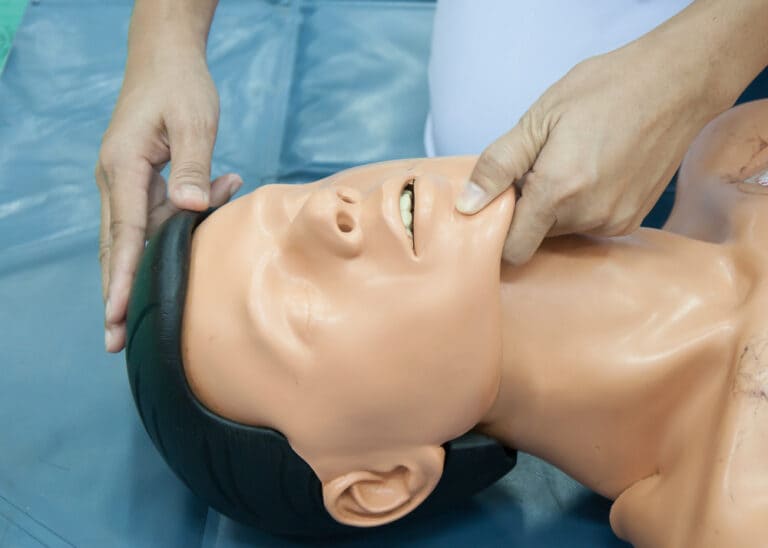


If there is one skill in life that is absolutely critical to learn, it is CPR (Cardiopulmonary Resuscitation). It’s the technique you use to save the life of someone in the crucial moments just after they’ve had a cardiac arrest (heart attack) or a respiratory arrest (lung failure).
Life hovers close to death in the minutes that immediately follow these heart and lung stoppages. Anyone nearby, whether trained in CPR or not, has to have the minimum basic knowledge to do what’s needed to save the fallen human’s life in such a touch-and-go situation.
Of course, getting formally trained and certified in CPR is always better because your rescue actions will be not only confident but also perfect. But in the absence of formal training, it’s still better to know what must be done and get going with your basic knowledge.
Read through this article, and get the familiarity you need to be able to help someone hanging between life and death after a cardiac or pulmonary arrest. But promise yourself to get formally trained as soon as you can find the time. There are excellent online courses and certifications you can take.
There are a few steps to urgently take before you decide whether someone who has collapsed needs CPR or not. According to an article by the staff of Mayo Clinic you must follow these processes one after the other.
Remember to call an ambulance before CPR because you can’t know how long you have to do CPR to get the person’s stopped heart or lungs to revive. You must do what you can to beckon professional medical help as fast as possible before you begin CPR.
According to the American Heart Association (AHA) guidelines, here’s how compressions are begun and given.
If the patient has a stopped heart (cardiac arrest), the above process of compressing alone would do. But if the patient has also stopped breathing (indicating respiratory arrest), you need a slight variation of the technique above. This is what we will explain next.
To get the patient to breathe again (even as you are getting the patient’s heart to beat again with compressions), you need to stop after every 30 compressions and do the rescue-breathing process.
A medically reviewed article in VeryWellHealth.com by Rod Brouhard, explains this process in good detail.
Remember, this is not about stopping the chest compressions and doing only the rescue breathing. You have to follow the whole procedure in a sequence … 30 chest compressions, followed by the head-tilt/chin-lift, and two rescue breaths … then again 30 chest compressions, followed by the head-tilt/chin-lift, and two rescue breaths … and so on.
Check if either the heart revives or the breathing revives. If there is no response, continue till help arrives. Don’t let up.
Medical News Today, in an article by Amanda Barrell, states there is just an 8-minute window to save a patient’s life after a cardiac or pulmonary arrest. If oxygenated blood does not reach the brain in 8 minutes, it can cause irreparable damage and death.
There are a couple of questions people usually ask about rescue breathing. Here are their answers:
In their book titled “Basic Life Support Providers’ Manual” (Medical Creations, 2021), the authors M. Mastenbjörk M.D. and S. Meloni M.D. agree that rescue breathing does use your exhaled air. This air primarily consists of carbon dioxide, for sure. Nevertheless, it also contains all the oxygen your body did not use.
This unused oxygen can constitute nearly 17% of the exhaled air. This much oxygen, the authors state, is at least enough to keep life going in the patient until professional help takes over.
According to a press release by the American Heart Association (AHA), their guidelines for persons giving CPR changed after the Covid-19 pandemic.
The new guidelines advise healthcare workers to mandatorily wear an N95 mask, along with other personal protective equipment (PPE) like a gown, gloves, and eye protection, when performing CPR on people with suspected or confirmed Covid-19. They must also perform rescue breathing using a bag-mask device with a high-efficiency particulate air (HEPA) filter.
Members of the public also should wear at least a well-fitting mask when doing CPR and use the compression technique alone. Avoid rescue breathing.
It’s time for all of us, whichever walk of life we come from, to learn what’s needed to help anyone in a life-and-death situation. Here’s our clarion call you too can follow: “Be CPR-aware. Save lives. Be a Heartstrong Hero.”